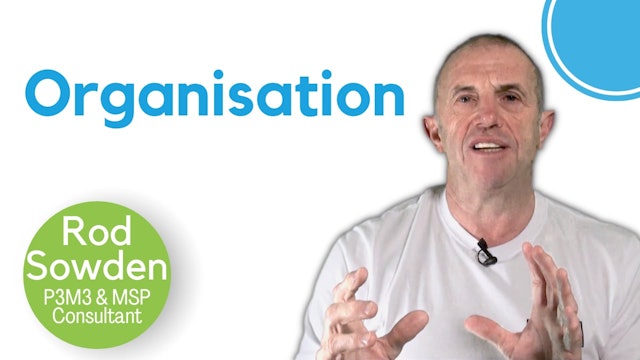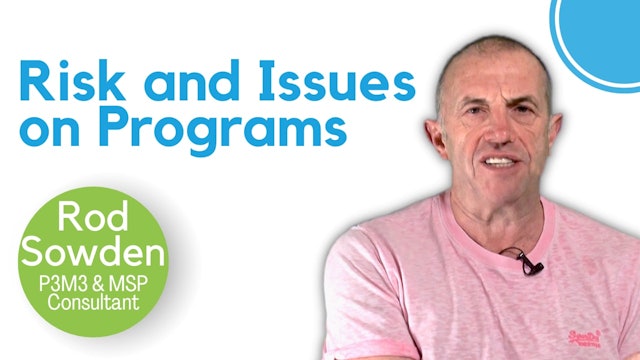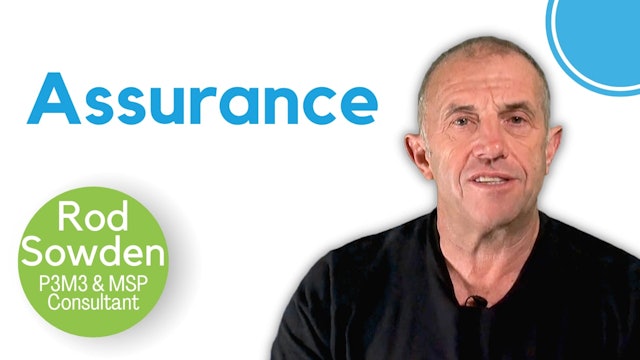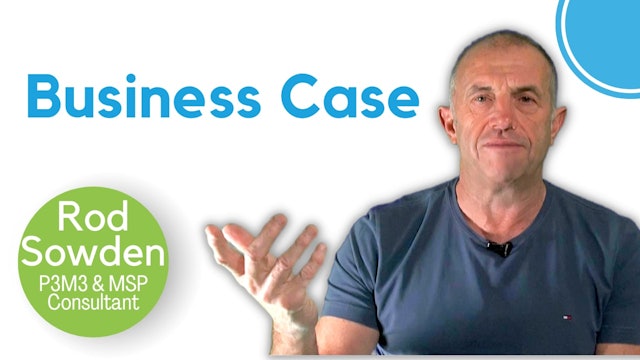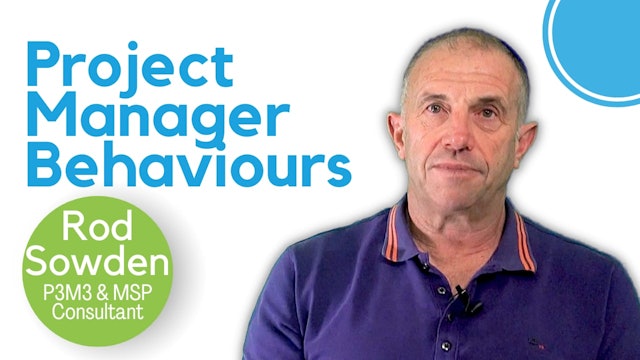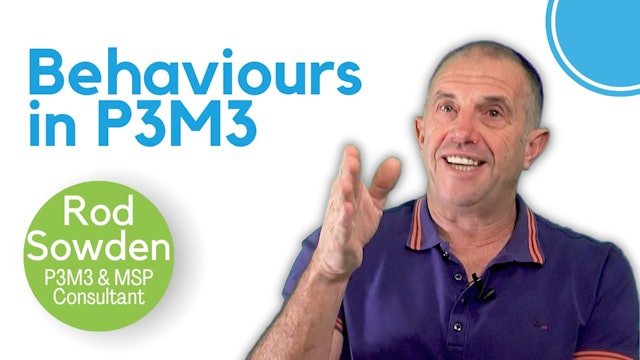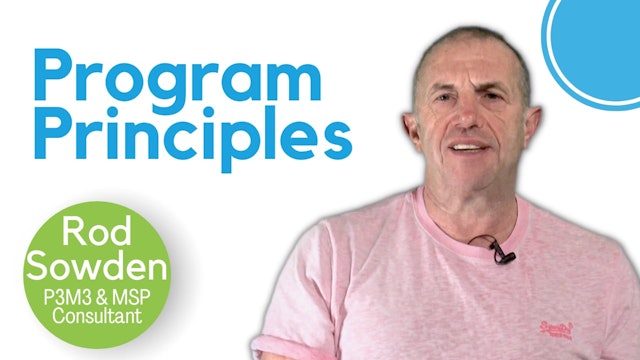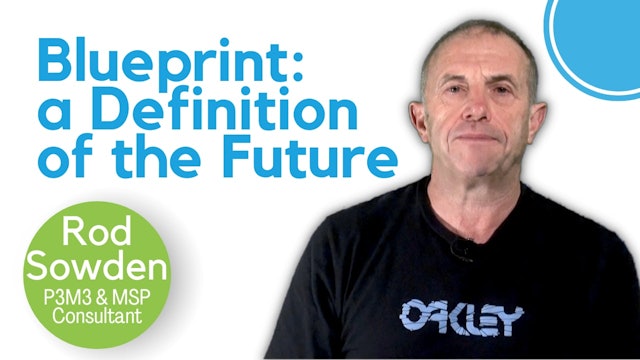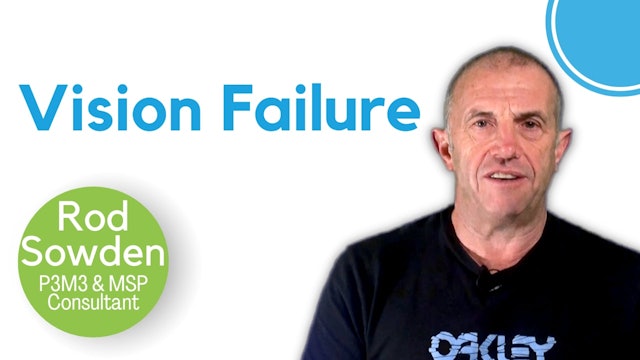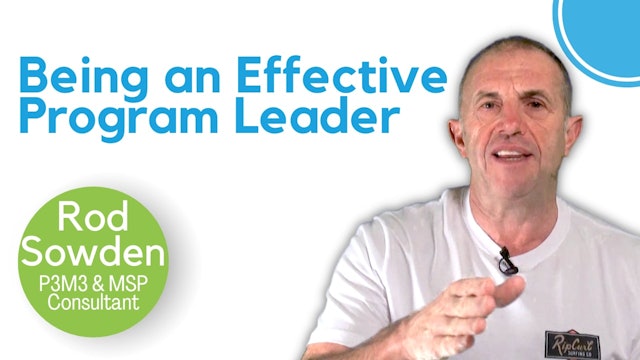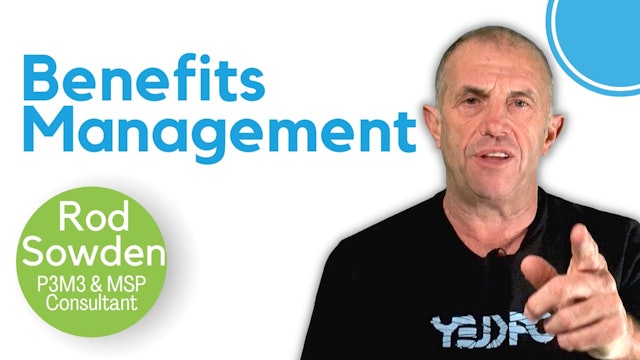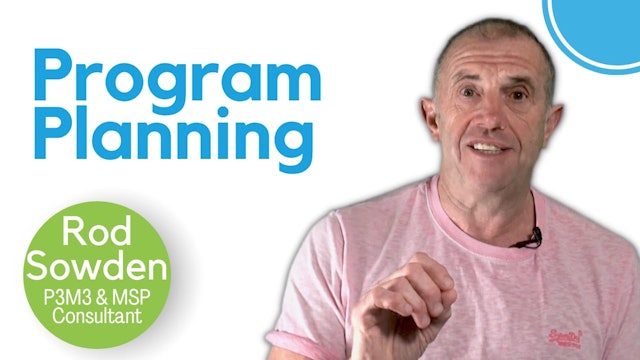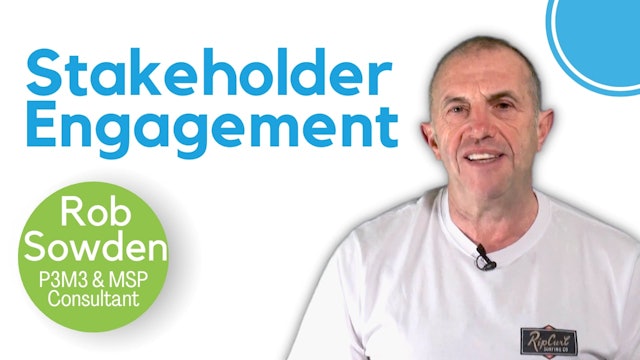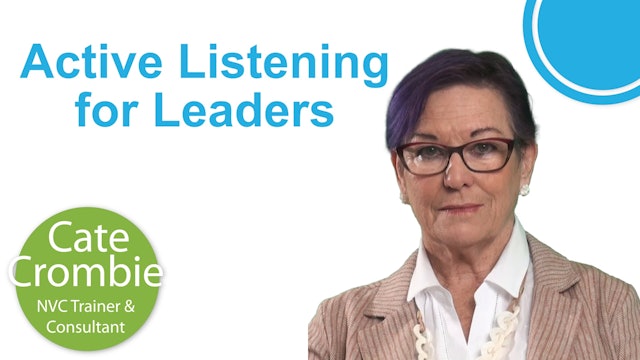-
06:56Episode 1
Organisation
Episode 1
Here Rod talks about how the organisation that requires the project interacts with the program and how as a leader, you can take some steps to ensure terms of reference are clear, the team is solid, prepared for changes and competent. Rod also suggests some cautions about the readiness of the org...
-
05:42Episode 2
Risk and issues on programs
Episode 2
Here Rod talks about how to develop a culture that is open to risks and issues, correctly connects to corporate management strategy and gives some tips that are designed to help leaders within programs effectively manage risks and issues.
-
04:23Episode 4
Business Case
Episode 4
Here Rod tells us about budgets you might have yet to think of, who to engage early with business cases, what the funding environment will be like and how to avoid double counting benefits.
-
02:53Episode 5
Project manager behaviours
Episode 5
Rod tells us about how project managers could improve their delivery of projects. He encourages dialogue with sponsors and talking to the teams. He encourages innovation by project managers and a system that enables it.
-
03:42Episode 6
Behaviours in P3M3
Episode 6
Adding behaviours to P3M3 was not easy, Rod describes how this was done and what ultimately demonstrates at levels 1 to 4 on how individuals demonstrate their ability to achieve each level of maturity.
-
04:31Episode 7
Program principles
Episode 7
Here Rod talks about common errors program leaders face and some principles to apply, from aligning corporate strategy to learning from experience. Every programme leader should use this as a checklist before starting.
-
07:06Episode 8
Blueprint: a definition of the future
Episode 8
Here Rod talks about two important documents that should be created at the beginning of a program, the vision and the blueprint. Rod describes the differences, the importance of each and some tips for a successful blueprint.
-
04:14Episode 9
Vision failure
Episode 9
Here Rod shares with us his extensive experience in reviewing other’s program visions, noting those that don’t work and one that particularly impressed him.
-
05:37Episode 10
Being an effective program leader
Episode 10
Here Rod tells us about the practicalities of being a program leader and what to do in some of the essential aspects of this role. From earning respect to hunting for talent, Rod tells us how to be politically astute and confident with changes in direction.
-
04:50Episode 11
Benefits Management
Episode 11
Here Rod tells us how important benefits are and should therefore be at the top of the agenda, keep an eye out for vanishing benefits and look out for additional benefits. He also encourages program leaders to be upfront and accurate about disbenefits as they are identified.
-
04:37Episode 12
Program planning
Episode 12
Here Rod talks about programme planning and some tips he has learned that should help directors design successful plans and avoid common pitfalls.
-
04:47Episode 13
Stakeholder engagement
Episode 13
Here Rod tells us about communication between stakeholders, developing a culture of success and tips about managing information and key messages. He also explores what not to do regarding communication within programs.
-
04:01Episode 14
Active listening for leaders
Episode 14
Cate Crombie, a Communications trainer, presents a step in effective communication, labeled "Link to a Feeling". This step emphasizes the importance of active listening, particularly when someone expresses concerns or emotions.
In this step, the listener acknowledges the speaker's feelings and p...
-
02:03Episode 15
Feelings in the workplace
Episode 15
Cate Crombie, a communications trainer, discusses the challenges associated with expressing feelings, especially in professional settings. She advises against using the "f word" – referring to "feelings" – as emotions can be difficult to articulate. Often, individuals guard their vulnerability, t...



